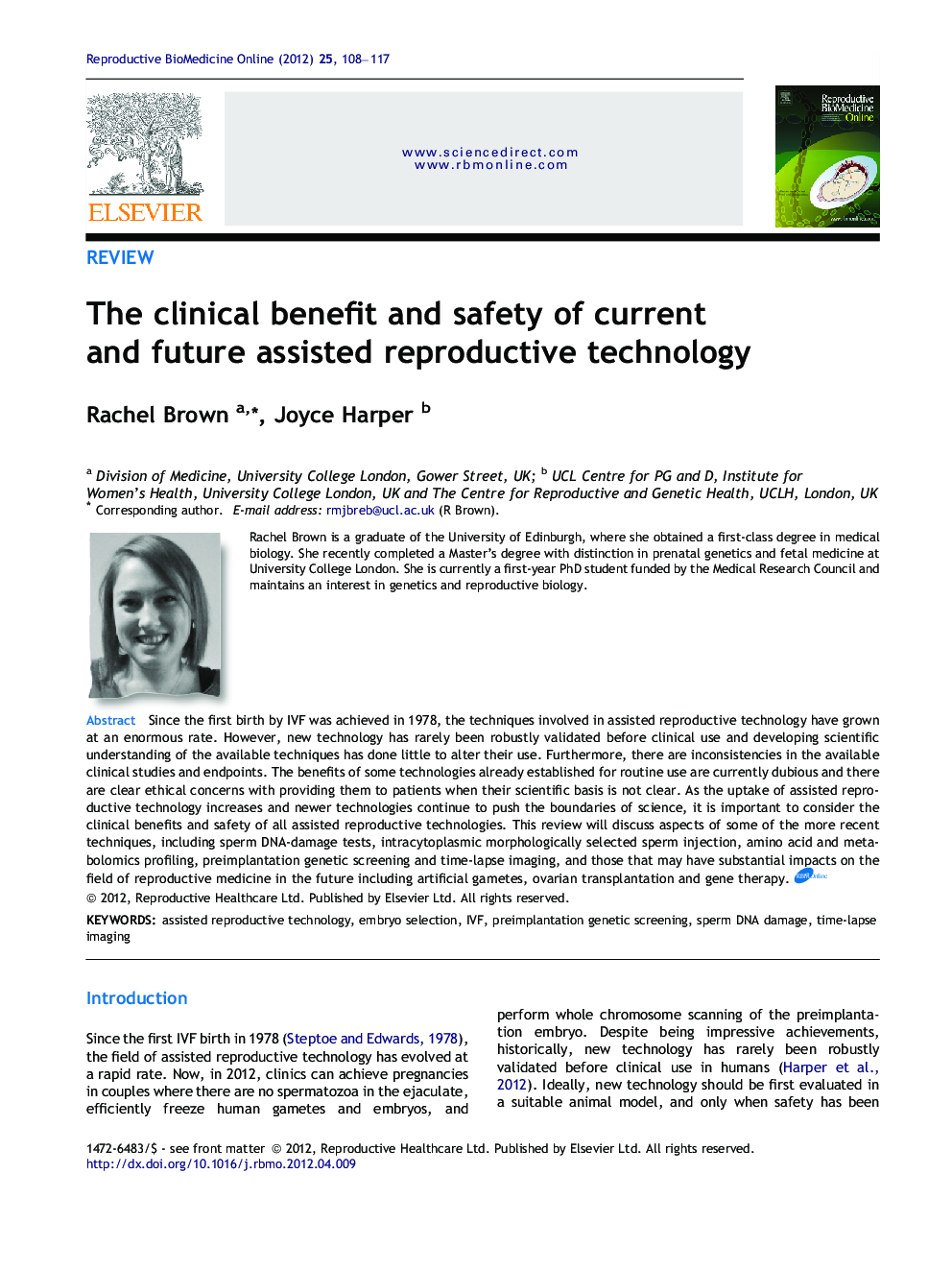| کد مقاله | کد نشریه | سال انتشار | مقاله انگلیسی | نسخه تمام متن |
|---|---|---|---|---|
| 3970450 | 1256725 | 2012 | 10 صفحه PDF | دانلود رایگان |

Since the first birth by IVF was achieved in 1978, the techniques involved in assisted reproductive technology have grown at an enormous rate. However, new technology has rarely been robustly validated before clinical use and developing scientific understanding of the available techniques has done little to alter their use. Furthermore, there are inconsistencies in the available clinical studies and endpoints. The benefits of some technologies already established for routine use are currently dubious and there are clear ethical concerns with providing them to patients when their scientific basis is not clear. As the uptake of assisted reproductive technology increases and newer technologies continue to push the boundaries of science, it is important to consider the clinical benefits and safety of all assisted reproductive technologies. This review will discuss aspects of some of the more recent techniques, including sperm DNA-damage tests, intracytoplasmic morphologically selected sperm injection, amino acid and metabolomics profiling, preimplantation genetic screening and time-lapse imaging, and those that may have substantial impacts on the field of reproductive medicine in the future including artificial gametes, ovarian transplantation and gene therapy.In 1978, the first child conceived by IVF was born. In the following 33 years, numerous technologies and techniques have been developed to further aid the ability to achieve pregnancies in couples for whom natural conception has failed. However, these techniques have rarely been robustly tested and approved before they are routinely offered to infertile couples. In other cases, a development in our scientific understanding of a technique has failed to be quickly incorporated into clinical changes. This raises the concern that some of the techniques offered to some patients offer little or no benefit, and in the worse cases is not confirmed to be safe. This is a particular concern as many of the techniques discussed here are often reserved for already vulnerable patients, such as those with recurrent IVF failure, This review begins by discussing some of the techniques already available to patients and questioning to what end they increase the likelihood of a live birth. The review then goes on to discuss the scientific developments that, although not currently in the clinic, could have substantial implications in the future. Since these newly developing techniques could be considered more controversial, discussion about their benefit and safety is urgently needed.
Journal: Reproductive BioMedicine Online - Volume 25, Issue 2, August 2012, Pages 108–117